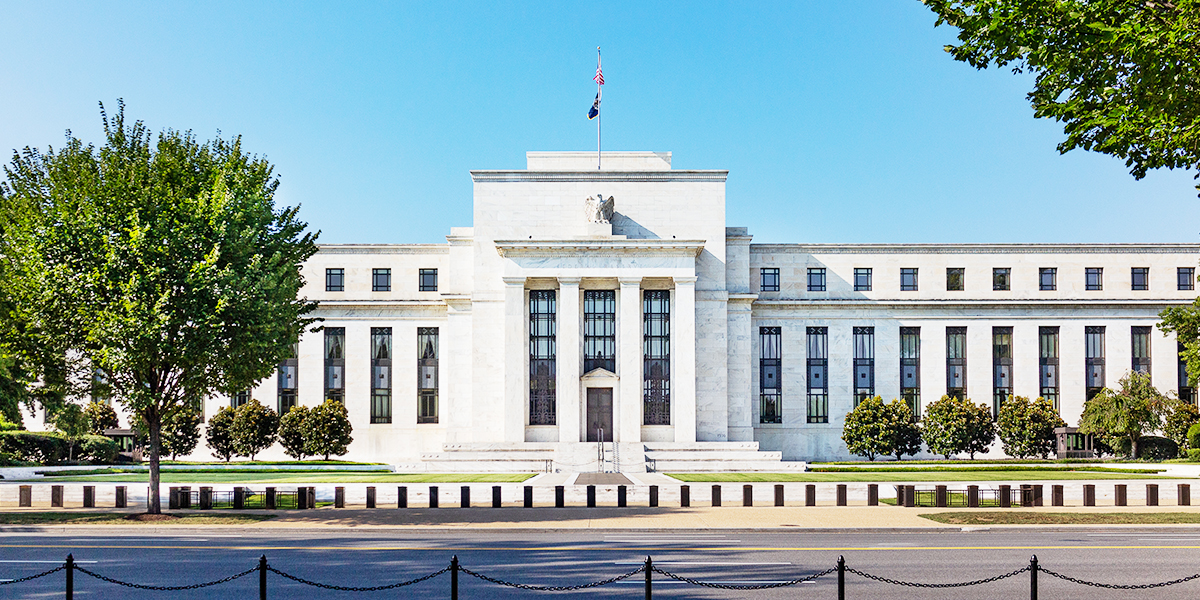
The short-term economic impacts of tariffs tend to be stagflationary. Some of the one-time increase in tariffs may hit U.S. businesses’ bottom line, while some may be passed on to the end-consumer, raising prices.
On April 2nd, the U.S. President issued an Executive Order based on a “national emergency” including two main tariff announcements: 1) 10% universal tariff on U.S. imports with the goal of raising revenue (going into effect April 5th) and 2) Higher tariff rates on 25+ U.S. trading partners based on their trade deficit with the U.S. (going into effect April 9th).
- These “reciprocal” tariffs were much higher than expected, ranging from tariffs of an additional 34% on China (for a total tariff increase of 54%pts this year), 20% on the European Union, 24% on Japan, 26% on India, and higher tariffs on Southeast Asian markets.
- Canada and Mexico were spared this round, as the separate USMCA discussion continues.
These announcements added to previous tariffs: 25% on non-USMCA compliant goods from Mexico and Canada (10% on Canadian energy and 10% on potash), additional 20% on China, 25% on steel and aluminum, and 25% on imported autos and auto parts. We estimate that this brings the average effective tariff rate to 25%1, an early 1900 high.
What to watch next: additional tariff announcements, retaliation from trading partners, trade negotiations, fiscal, monetary, and FX global responses.
Potential economic and market impacts:
- The short-term economic impacts of tariffs tend to be stagflationary. Some of the one-time increase in tariffs may hit U.S. businesses’ bottom line, while some may be passed on to the end-consumer, raising prices. Important business decisions (investment and hiring) may be postponed or canceled, and consumers may pull back on bigger purchases. 1Q growth was already looking soft and further softening in 2Q will depend on the duration of tariffs.
- Previously, recession risk had increased due to policy uncertainty and may increase further depending on the duration of these tariffs.
- The extent to which global companies and economies are hit will depend on their policy responses and the external vs. domestic focus of specific companies. “Safe haven” currencies like the Japanese Yen, Swiss Franc, and even the Euro can strengthen further, while some EM Asia markets (like China) may decide to devalue their currencies.
Investing amid the tariff turmoil:
- Markets have sold off sharply due to the larger-than-expected tariff announcements. Investors can diversify their portfolios with multiple defenders:
- Core bonds (for growth shocks), with the U.S. Agg +3% year-to-date as 10-year yields have fallen 38bps.
- Real assets, like infrastructure, transportation, and real estate (for its uncorrelated behavior with a 60/40). Given growth slowdown concerns, sectors of real estate with favorable demand/supply (like single-family housing) should fare better. Transportation may be a beneficiary given longer shipping routes and less efficient logistics.
- Hedge funds, the big winner from volatility, as they exploit mispricing opportunities and benefit from heightened market dispersion.
- Diversifying U.S. equity exposure is key given high expectations and concentrated positioning in previous winners (especially the “Magnificent 7”).
- In 1Q, investors were rewarded for being diversified, with value outperforming growth by 1,000bps and international outperforming the U.S. by 1,100bps (biggest since 1989).
- Active management can help separate the winners from the losers, as companies and sectors will be impacted unevenly.
- Low-quality companies with lofty valuations continue to be the most vulnerable, so careful stock and credit selection (including in public and private credit) will be key.
Companies that are domestically oriented, services-oriented, and have higher pricing power are likely to fare better. This includes in both public and private equity. Some pockets of capital markets (like venture capital) where valuations are more dependent on corporate business models achieving long-term scale versus short-term uncertainty can do well.
1 Our estimates are based on tariffs on China being added on top of existing tariffs, which were 11% as of January 2025
